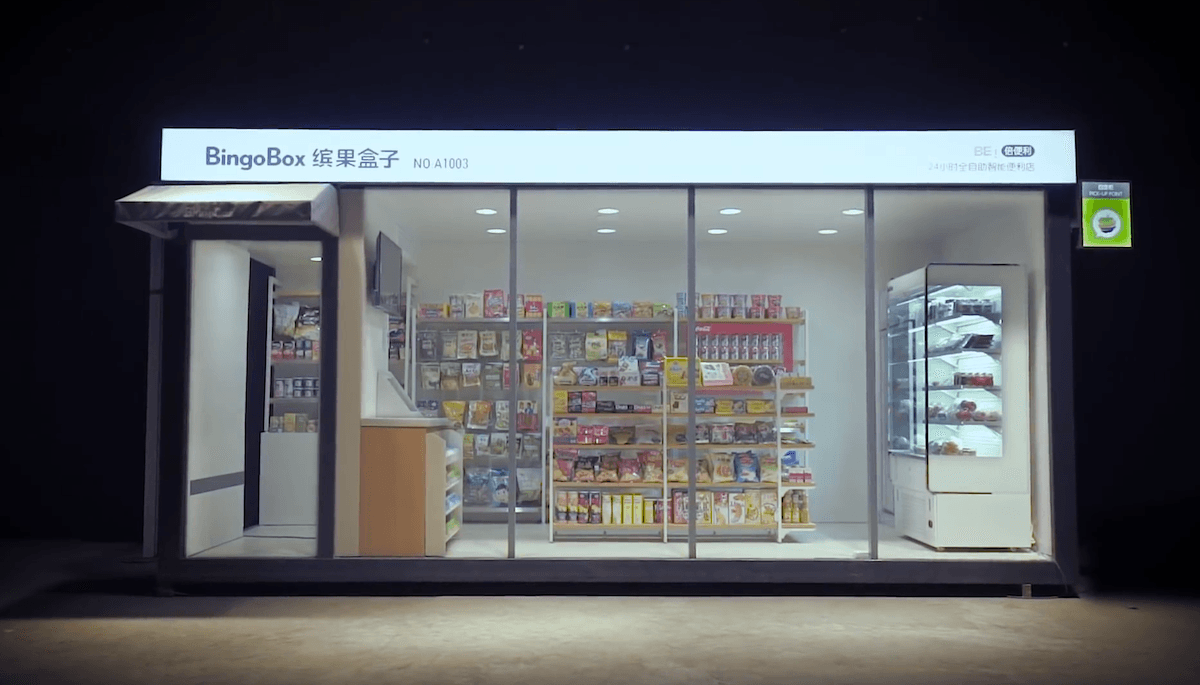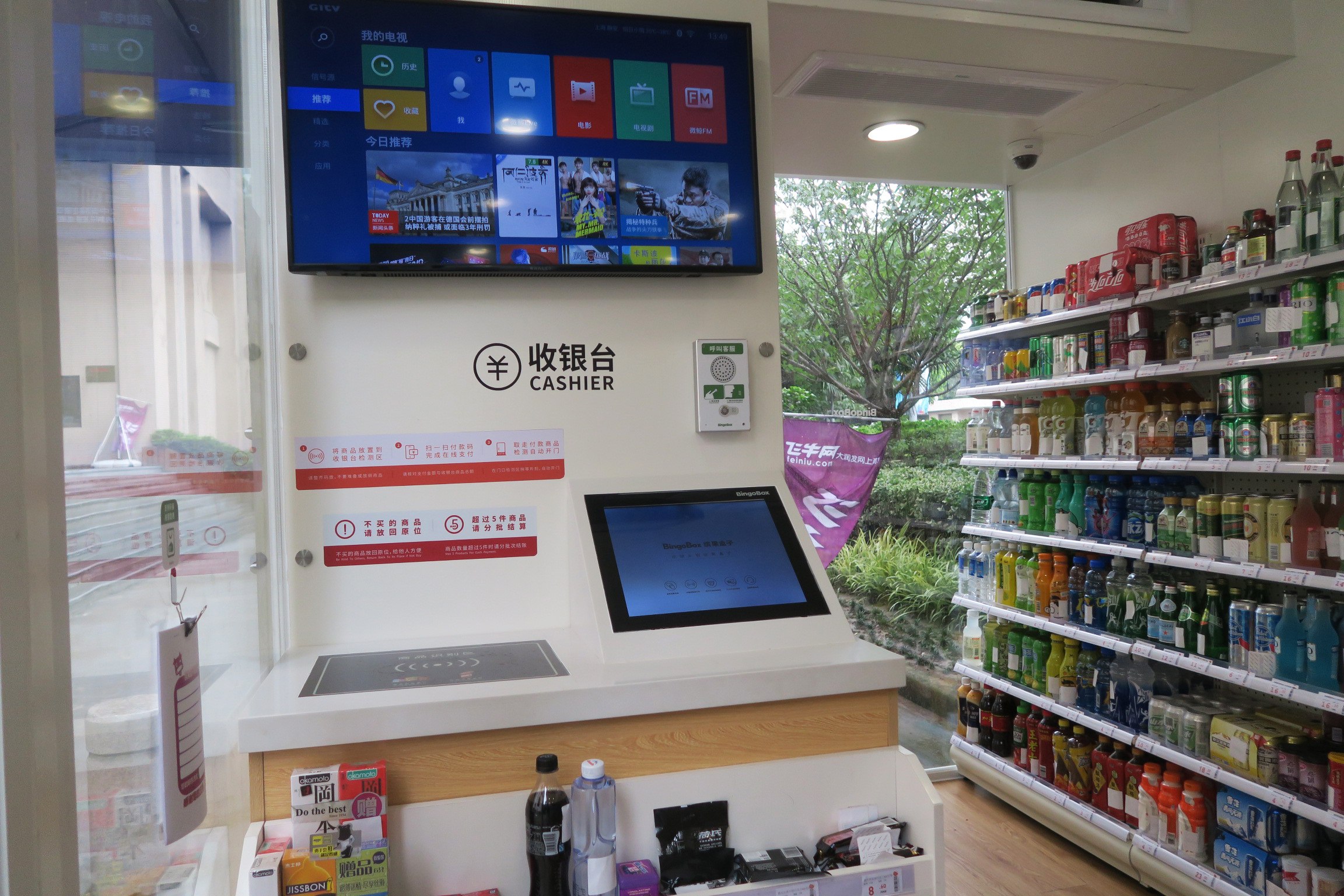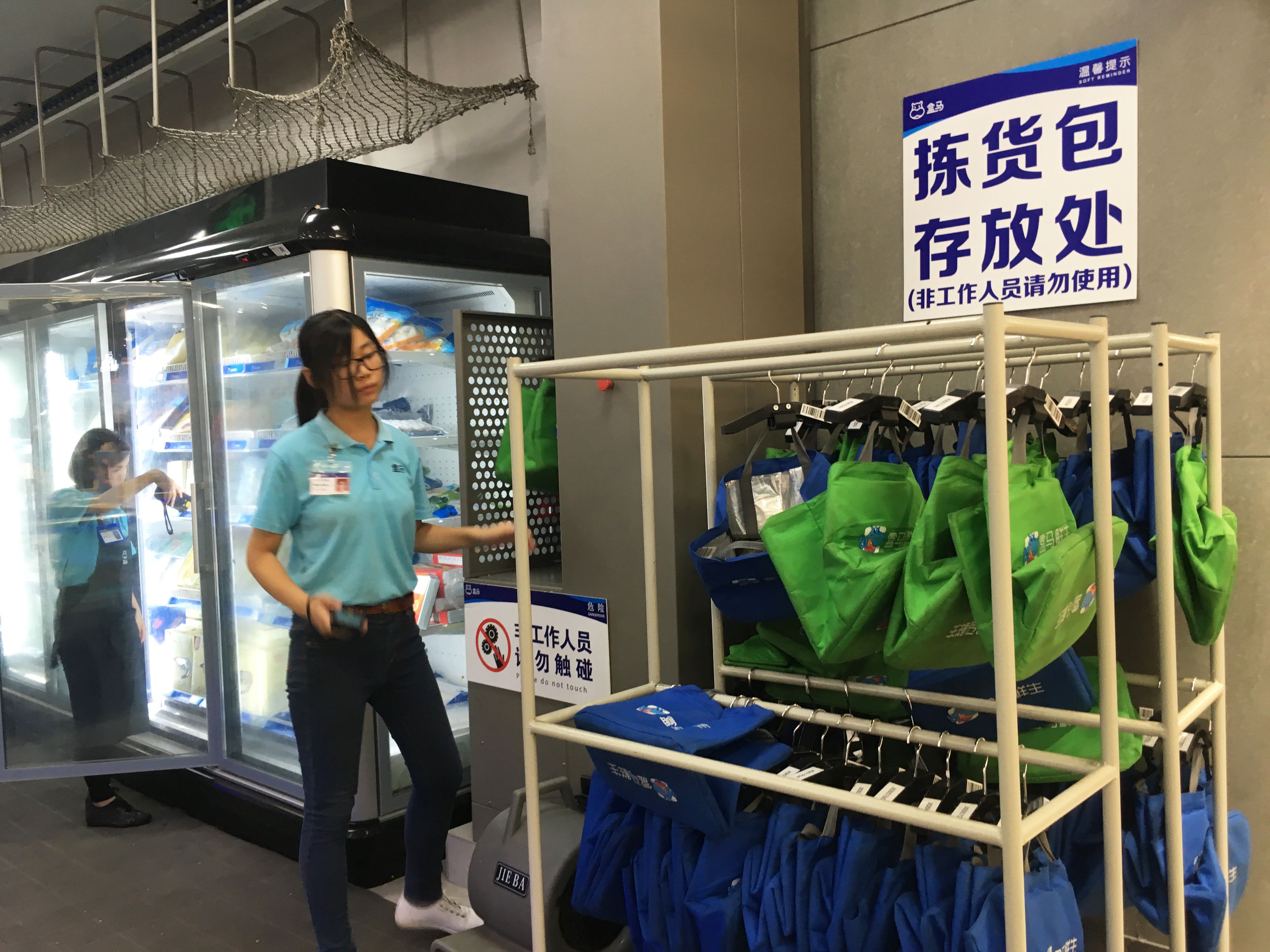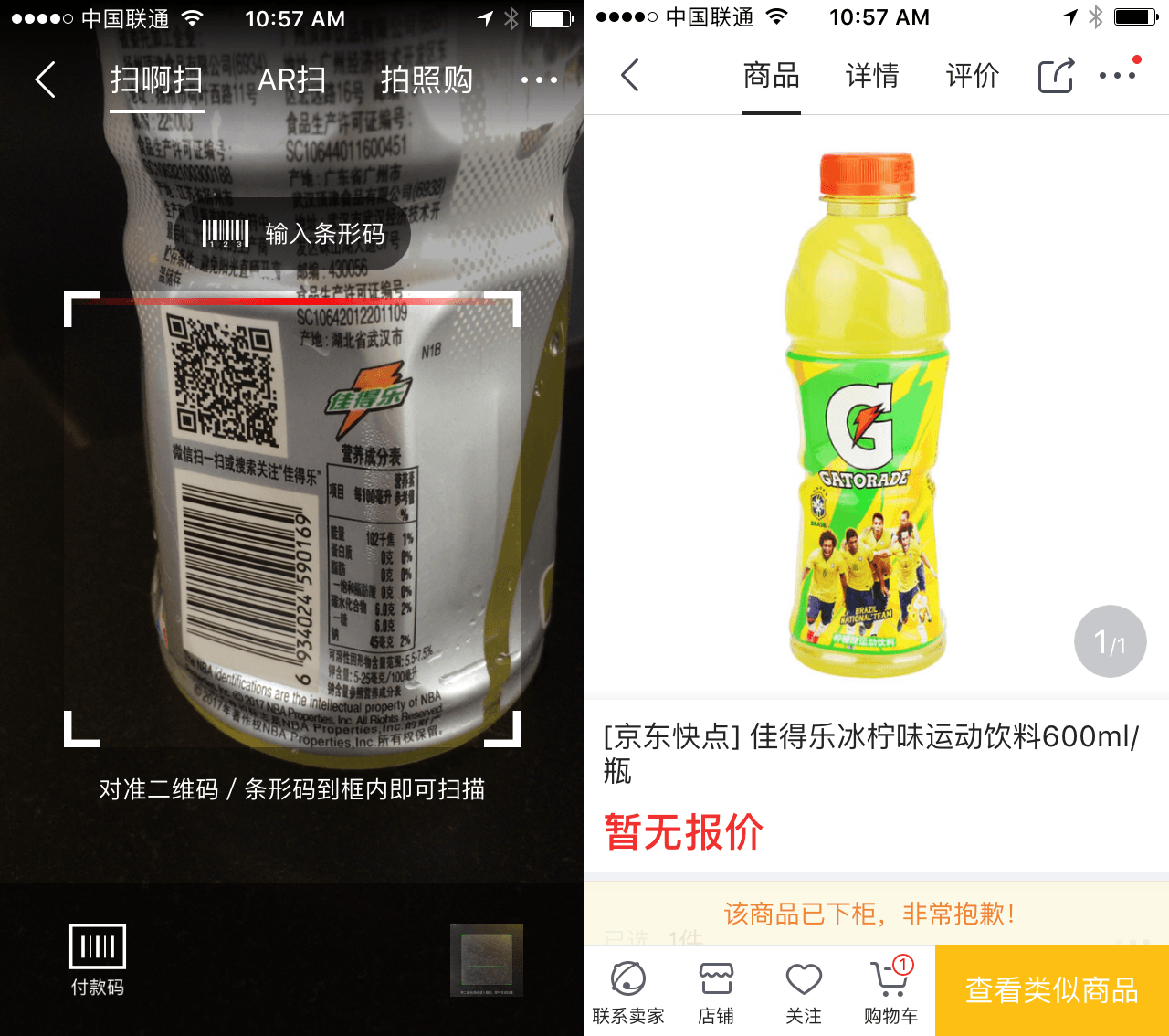
Photo credit: wangsong / 123RF.
Chinese consumers love shopping online. And no wonder – thanks to mobile payments and speedy logistics, consumers can order groceries, gadgets, clothes, and more in just a few taps.
The ease of online shopping is an important part of China’s booming ecommerce industry. According to the country’s National Bureau of Statistics, online sales hit US$581 billion last year, about half of which were made through a smartphone. Offline retailers, on the other hand, are suffering a decline – a global trend that’s plaguing big box retailers and department stores in the US as well.
But physical stores still have a role to play in the world of retail, especially when they’re combined with online resources. In China, brick-and-mortar shops are increasingly driving online sales in an offline-to-online process called “showrooming.” According to a KPMG report last November, about a third of online shoppers in China said that seeing products at a physical store led to a digital purchase, an increase from 24 percent in 2015.
About a third of online shoppers in China said that seeing products at a physical store led to a digital purchase.
Chinese ecommerce companies are also paying attention to foot traffic. In January, Alibaba led a US$2.6 billion bid for department store chain Intime Retail Group to expand the company’s physical footprint. Last week, competing ecommerce giant JD unveiled a chain of offline experience centers to let consumers try products before making purchases online.
For these tech-savvy ecommerce companies, physical shops are not only an opportunity to experiment with new ways of driving sales, but also an extension to their ever-growing logistics network.
Here are five ways that tech is redefining China’s offline retail industry:
Unmanned shops

Screengrab from Bingobox video.
Scan a QR code. Walk in, pay with your phone, and leave. That’s the kind of 24-hour convenience promised by unmanned shops like Bingobox, the brainchild of a Chinese startup based in Zhongshan, southern China.
Roughly the size of a shipping container, Bingobox’s shops are filled with the usual goods of a convenience store: soft drinks, toiletries, snacks. To unlock the door, users scan a QR code with their phone, while a camera equipped with facial recognition checks for unregistered entrants. To checkout, customers place their items on a platform, where it’s recognized by Bingobox’s system. Payment is via QR code – the ubiquitous portal for mobile payments in China.
Alibaba is also toying with the concept of unmanned shops. Last month, the tech giant showed off its own cashier-less shop called Tao Cafe, which utilizes QR code scanning and facial recognition to facilitate automatic payment and purchasing.

Bingobox’s checkout station. Image credit: Tech in Asia.
To be sure, unmanned shops in China are still fairly low tech, unlike Amazon Go, which uses computer vision to recognize what products buyers are taking out of the shop (though it’s experiencing technical challenges of its own). Bingobox relies on RFID tags, which are pasted on every product in the shop. Tao Cafe also uses some kind of tagging system to recognize items, though Alibaba isn’t disclosing specific details at this time, according to a company spokesperson.
There have also been hiccups, like the time Bingobox overheated during a hot summer week in Shanghai.
Still, they’re an example of things to come – even waiter-less restaurants are popping up in China. If anything, experiments like Bingobox and Tao Cafe show how mobile payments, QR-code triggered locks, and facial recognition can be combined to revamp the experience – and staffing costs – of a physical shop.
Self-checkout
Self-checkout isn’t new, but in China the idea has taken on a twist, thanks to WeChat, the country’s most popular social messaging app. In particular, WeChat’s latest feature – dubbed mini programs – lets shops develop their own lightweight apps inside WeChat. The utility of mini programs runs the gamut: bike rentals, food delivery, live streaming, and self-checkout.
See: WeChat wants to use mini programs to tap offline traffic
Unlike legacy self-checkout systems, a self-checkout mini program can be implemented without additional hardware. Instead, everything is processed through the customer’s phone. In Beijing, a supermarket chain has already rolled out its own WeChat-powered self-checkout system. After scanning their items and paying via WeChat Pay, Huaguan customers can exit the store through an express lane after showing a verification QR code to store staff.

Left to right: 1) Checkout instructions: scan, pay, exit through the express lane 2) Add items to cart.
Of course, the idea of using a mobile phone for self-checkout isn’t new. Walmart, for instance, has its own Scan & Go mobile app to help customers avoid checkout lines. However, mini programs are simpler to develop than mobile apps, especially since they’re part of WeChat – no need to develop both Android and iOS apps to cover the market. Operating through the social app also ties in nicely to customer loyalty programs and marketing campaigns, as WeChat also supports brand accounts.
That’s a key feature of China’s retail ecosystem that is absent elsewhere: super-centralized platforms that can connect online services, offline services, payments – and in WeChat’s case – social media.
Turning WeChat traffic into foot traffic

Photo credit: siraphol / 123RF.
Outside of tech companies, brands in the F&B sector are also experimenting with new applications to drive offline sales.
Starbucks, for instance, is partnering closely with WeChat to enable digital gifting. Called “Say It with Starbucks,” the coffee shop’s mini program lets users buy friends digital cups of coffee that can be redeemed offline. In a country where gifting is a cultural norm (as demonstrated by WeChat’s popular red packets feature) , Starbuck’s digital gift cards were a hit.
Starbuck’s mini program saw 2 million transactions – purchases and peer-to-peer transfers of digital gifts – between its February launch date and the end of June, according to a company spokesperson.

Like an e-card but with money attached.
Other brands have also utilized mini programs to enhance offline sales. KFC, for example, has a mini program to cut down queues inside the shop. Instead of buying at the store, it lets users order food ahead of time before picking it up at a KFC of their choice. Though simple, KFC and Starbuck’s mini programs show how new online services can funnel online traffic – namely WeChat traffic – into physical outlets.
Stores as nodes in the logistics system
Not long ago, the idea of one-day delivery was novel. Today, products can be delivered within the hour.
In China, tech companies are integrating with offline retailers to make that happen. Alibaba has a supermarket chain called Hema that can send groceries to customers in 30 minutes. To accomplish that, the tech giant has made each grocery store a fulfillment center designed to service customers within a three-kilometer radius.
Keeping deliveries local has a disadvantage of course, as not every customer lives within three kilometers of a Hema (yet). So far, Alibaba has opened 13 Hema stores in Beijing, Shanghai, and Ningbo.

Hema employees collect in-store delivery items in bright green and blue bags before sending them up a conveyor belt for processing. Photo credit: Tech in Asia.
In-store pickup is another way to convert brick-and-mortar locations into logistics hubs. Japanese apparel brand Uniqlo rolled out in-store pickup for Chinese consumers earlier this year to boost foot traffic and improve its delivery service, as customers might not be at home when the package arrives (that’s why some convenience stores in China double as pickup stations for packages).
Though not groundbreaking, in-store pickup could see renewed traction in China as retailers optimize their delivery systems, which are especially strained during high volume shopping campaigns, like Singles Day, the largest shopping holiday in China.
Experience centers

One of JD’s experience centers in Shanghai. Photo credit: Tech in Asia.
With almost anything available online these days, the challenge for offline retailers is to offer customers something unique. For large tech firms like JD and Xiaomi, that means curating brick-and-mortar showrooms.
At JD experience centers, for instance, shoppers can try and compare the performance of different electronics, like smartphones. Meanwhile, store employees can immediately answer any product-related questions. Prices at JD experience shops are also synchronized with online offerings and deals so in-store customers can make purchases without losing out on cheaper prices.
Experience centers also benefit from data analytics of online orders. They can be used to optimize inventory management at physical venues, as well as customize product offerings by store location.
“We can map out what kinds of products [and] brands are popular in which areas,” a JD spokesperson told Tech in Asia. “We already use that for giving a personalized online interface and stocking inventory warehouses so this is a pretty natural application.”

While shopping offline, customers can also use JD’s app to scan or take photos of items and order them online. Alibaba’s ecommerce app Taobao also supports this function.
That level of online-to-offline integration will only increase as Chinese consumers become increasingly sophisticated. According to a survey conducted by PwC last September, 70 percent of respondents said that they considered “real-time, personalized offers” an important attribute of the in-store experience. Being able to see and order products on screen while shopping also ranked at about 70 percent.
China’s tech giants like Alibaba and Xiaomi will have the technical resources to keep up, but more traditional retailers might have to partner up or double down on their own backend to stay relevant.
Currency converted from Chinese yuan. Rate: US$1 = RMB 6.66
This post As ecommerce steamrolls retail, China’s brick-and-mortar stores fight back with tech appeared first on Tech in Asia.
from Tech in Asia https://www.techinasia.com/5-ways-tech-brick-and-mortar-retail
via IFTTT
No comments:
Post a Comment